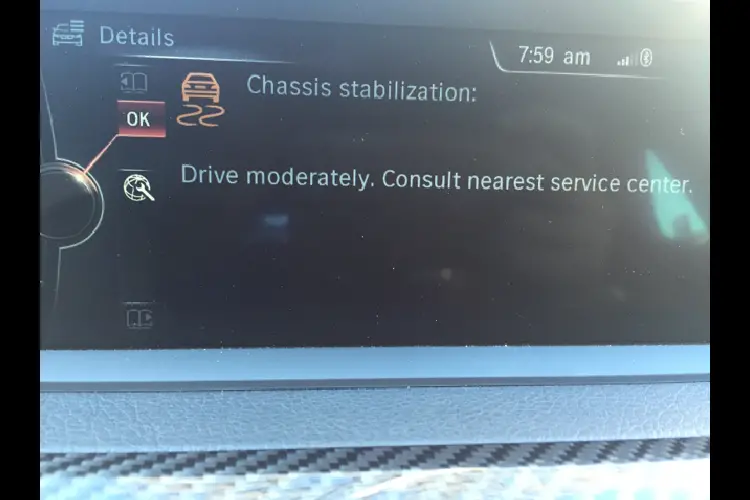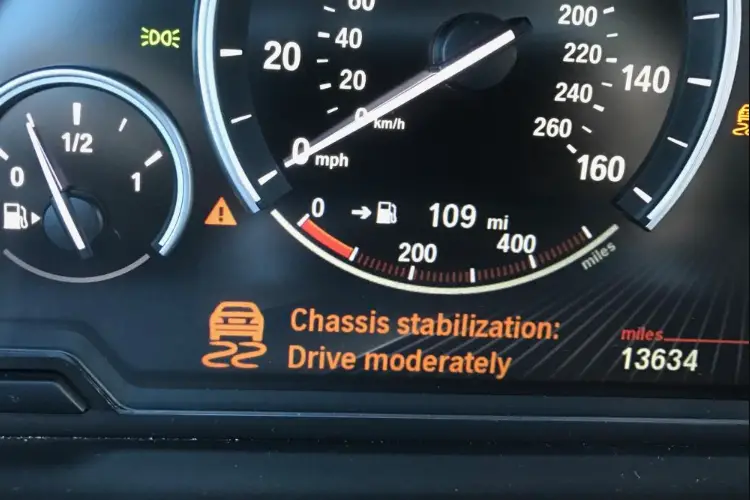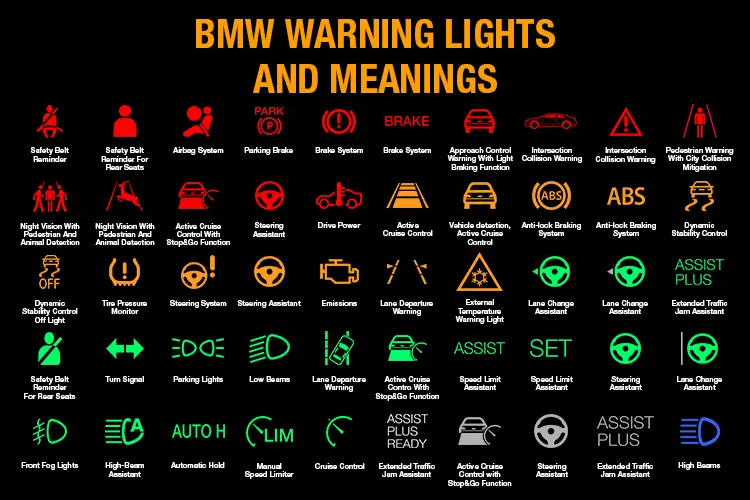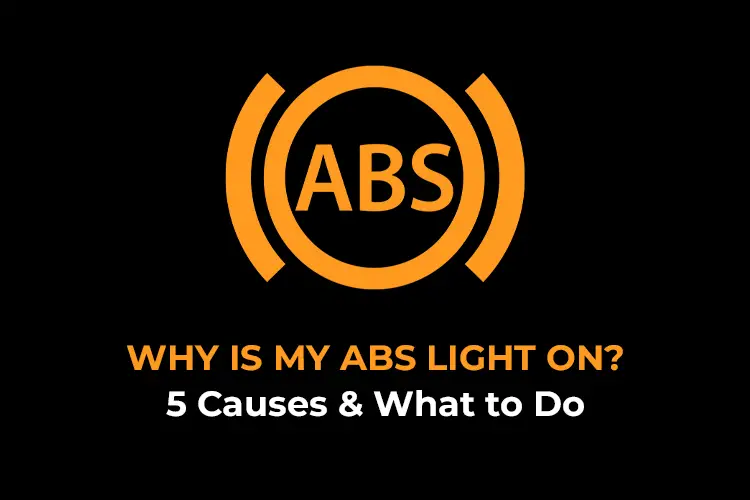Have you ever found yourself asking questions like, “What does Chassis Stabilization mean for my BMW?” or wondered about its implications for your vehicle’s performance?
If so, your quest for answers ends here.
This comprehensive guide will go through the meaning, root causes, and actionable steps to make the most of this message.
So, without further ado, let’s dive into the depths of understanding what Chassis Stabilization on your BMW!
What Does Chassis Stabilization Mean on a BMW?

Chassis stabilization on a BMW refers to a feature designed to maintain the vehicle’s stability, handling, and control by utilizing various sensors and actuators placed throughout the vehicle.
This technology ensures a comfortable ride, enhances stability during sharp corners and wet road conditions, and reduces the risk of accidents, instilling confidence in the driver.
When encountering a Chassis stabilization malfunction, it indicates that the vehicle’s safety control systems, such as Dynamic Stability Control (DSC) and Dynamic Traction Control (DTC), are experiencing malfunctions. This error code implies that the vehicle is at risk of swerving out of control.
The following error message might appear on your iDrive: “Chassis stabilization: Drive moderately. Consult nearest service center.“
Chassis stabilization warnings typically arise when the vehicle’s sensors detect instability, such as wheel spin due to loss of grip. A malfunctioning sensor can trigger the warning, and various symptoms like flashing warning lights, reduced engine power, or the vehicle entering “limp mode” may occur.
The chassis stabilization malfunction message might be accompanied by other warning lights, indicators, or symptoms that indicate issues with the vehicle’s stability and safety systems.
Here are some common things that can come on or occur along with this message:
- DSC light
- DTC light
- Check engine light
- ABS warning light
- Yellow or red triangle with an exclamation point warning light
- Reduced engine power
- Limp Mode activation
- Steering or handling changes
- Unusual noises
Is It Safe to Drive with Chassis Stabilization Malfunction?

No. Driving with a chassis stabilization malfunction in your BMW is not ideal.
When the system detects a malfunction, it usually goes into Limp Mode, which may limit throttle and apply braking to avoid instability. This can impact your ability to accelerate, brake, and maneuver the vehicle effectively.
Depending on the severity of the malfunction, you might also experience reduced engine power and warning lights on the dashboard.
Given these potential risks, it’s recommended to address the chassis stabilization malfunction as soon as possible. Continuing to drive with this issue could compromise your safety and the safety of others on the road.
You should consult your vehicle’s manual and consider seeking assistance from a qualified BMW service center to diagnose and repair the problem before resuming normal driving.
Why is the BMW Chassis Stabilization Malfunction On?
Remember that the DSC or DTC systems play a crucial role in maintaining vehicle stability and traction. So any glitch within these systems triggers the “Chassis Stabilization” error on the dashboard.
Sensor Malfunctions
The system relies on a network of sensors that monitor various parameters such as vehicle speed, steering angle, wheel positions, and road conditions. If any of these sensors fail or provide inaccurate data, it can lead to improper adjustments by the system.
Solution: Replace the damaged sensor with a new one. Trained technicians can use diagnostic tools to pinpoint the problematic sensor and perform the necessary replacement.
Low Battery
The DSC system relies on the vehicle’s battery for power. If the battery doesn’t have sufficient charge, the DSC system may not operate correctly.
Solution: Test the battery voltage using a multimeter. If the voltage is low, recharge the battery or replace it if it’s old and unable to hold a charge.
Faulty Alternator
The alternator is responsible for generating electricity to power the vehicle’s electrical components, including the DSC system. A damaged alternator can lead to improper functioning of the DSC system.
Solution: Use a multimeter while the engine is running to test the alternator’s output. If the output is significantly lower than the expected voltage, consider replacing the alternator.
Wiring Issues
Damaged or faulty wiring can disrupt the communication between the sensors and the stabilization system, leading to message activation.
Solution: Examine wiring for damage and repair or replace compromised sections. Professional assistance may be necessary.
Suspension Component Problems
The Chassis Stabilization system relies on inputs from various suspension components to optimize stability. If any of these components, such as control arms or dampers, are malfunctioning, it can trigger the warning.
Solution: Conduct a comprehensive suspension component inspection. Repair or replace damaged parts through an experienced mechanic.
How Do I Fix My BMW Chassis Stabilization Malfunction?
To fix the “Chassis Stabilization Malfunction” issue in your BMW, you can follow these steps:
Step 1: Initial Reset Attempt
- Slow down and park your BMW in a secure spot if the warning appears while driving.
- Turn off the ignition and wait for about five to ten minutes.
- Turn the ignition back on and start the engine.
This procedure might reset the message temporarily, and in some cases, it could eliminate the warning altogether.
Step 2: Check for Other Warning Lights
If the initial reset didn’t resolve the problem, proceed to examine whether any other warning lights are activated on the dashboard.
- In case the ABS warning light is on, identify which ABS sensor is malfunctioning. You might need to replace the ABS sensor, inspect the ABS ring for damage, or address drive-shaft corrosion.
- If the Check engine light is illuminated, inspect engine fluids and filters that might require replacement.
Step 3: Use a Diagnostic Tool to Read the Codes
To accurately diagnose the problem, use a diagnostic tool specifically designed for BMWs that can read the manufacturer’s specific error codes.
Retrieve the codes and identify the underlying issue causing the Chassis Stabilization Malfunction, review the specific codes and their descriptions. This will give you insight into the exact component or system that’s malfunctioning.
The AUTOPHIX 7910 is a recommended tool that works with BMW vehicles, providing both OBD-II and BMW-specific code reading capabilities.
Step 4: Address the Issue
Depending on the diagnosis, you might need to replace a faulty sensor, repair damaged wiring, replace a component, or perform other necessary repairs.
Note: If you’re unsure or unable to diagnose and fix the issue on your own, it’s best to consult with a qualified mechanic or a BMW service center to ensure a proper and safe resolution.
Step 5: Clear the Codes
Once you are confident that the issue has been addressed, you can proceed to clear the error codes using the diagnostic tool. Clearing the codes will reset the message and warning lights on your dashboard.
Note: It’s important to note that clearing the codes without addressing the underlying issue may result in the warning returning shortly. Properly diagnosing and fixing the problem first ensures that the message won’t come back due to the same issue.
What’s Next?
You are now equipped with a wealth of knowledge to tackle the chassis stabilization malfunction on your BMW confidently.
Remember, driving with a chassis stabilization malfunction can compromise not only your safety but also that of fellow road users. Ensuring you take the necessary steps.
Consider a diagnostic tool as your compass, unveiling the exact cause of the issue with precision.
Now it’s your turn!
Let me know your experiences with this message by leaving a comment below.




Recommended for you
Service AdvanceTrac Ford: 5 Causes and How to Fix It
Auto PDC Malfunction on BMW: Causes and Fixes
Drivetrain Malfunction BMW: 6 Causes and How to Fix It